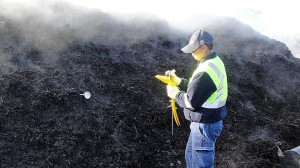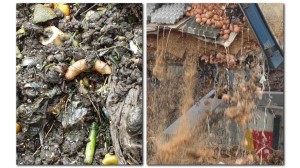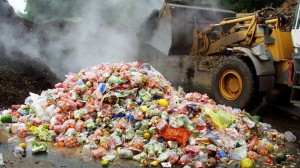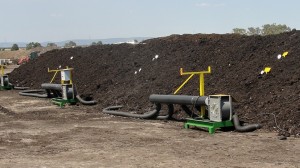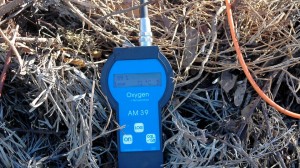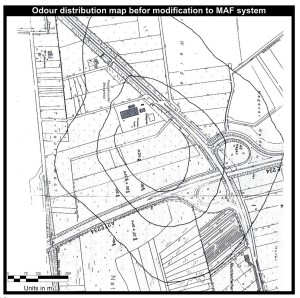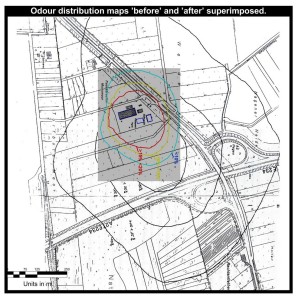Odour problems in composting operations almost always come from oxygen depletion within the windrow. Odour is exacerbated by disturbing the material (such as when it is moved or being turned). The wind carries this odour over long distances leading to complaints by residents and business in the vicinity.
The cause of odour stems mainly from anaerobic processes in the windrow that create a variety of organic acids, such as acetic acid and butyric acid. This is in addition to the potential production of hydrogen sulfide and methane gases, substances well-known for their distinctively unpleasant odour.
To avoid this anaerobic process, air must permeate the material throughout the windrow, thus converting it to an aerobic process, the byproduct of which is simply CO2 and water. Paradoxically, the traditional method of using windrow turners to aerate the material carries the potential to increase odour emissions by bringing the oxygen starved compost to the surface. And, since oxygen levels are very soon depleted within the compost, the entire exercise (and associated costs in manpower, machinery and fuel)is often wasted.
The MAF (mobile aerated floor) system significantly reduces odour emissions by maintaining an aerobic process throughout the static pile.
The following odour emissions survey charts are excerpted from an official expert report on behalf of a composting plant prior to and after modification to the MAF system.
The plant commissioned a report in 2000 after installation of in-vessel systems to show compliance with government odour emissions regulations (first chart.) Although acceptable at the time, faced with a further reduction of allowable emissions standards (due to take effect in 2007), the plant opted to modernize once again in 2004. They chose the MAF system. In order to accurately reflect odor emissions in the report after the MAF modification (second chart), the in-vessel systems were shut down. They were never turned on again.
To reflect the dramatic reduction in odour emissions after converting to the MAF Composting System, the ‘before’ and ‘after’ odour distribution maps are shown superimposed on the third chart.

